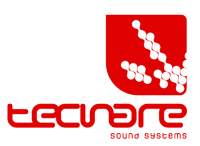Explore the World of Sound
Design and Optimization of Sound Systems for Large Venues
Designing a sound system for a large venue is a complex challenge that requires expertise in acoustics, electroacoustics, and signal processing. Factors such as coverage, intelligibility, dispersion, and sound attenuation in the air play a crucial role in ensuring an optimal experience for the audience.
In this article, we will explore the fundamental principles of sound system design, the technologies involved, and advanced strategies for optimization.
Strategies and Technologies to Ensure Uniform Coverage and Clarity
Featured Articles
Explore Other Topics
Acoustic Science
Dive into the principles and theories that define sound and its behavior in different environments.
Audio Technology
Stay updated with the latest advancements and innovations in audio equipment and software.
Sound Design
Explore the art and techniques of creating immersive soundscapes for various media.
Music Production
Learn about the processes and tools used in crafting and producing music.
Environmental Acoustics
Understand how sound interacts with natural and urban environments.
Psychoacoustics
Study how humans perceive and interpret different sounds.
Audio Engineering
Gain insights into the technical aspects of recording and manipulating sound.
Sound History
Discover the evolution of sound technology and its impact on society.
Tecnare
Loudspeakers Series
E Series
IBZA Series
V Series
ALIS Series
Array Series
SW Series
KT Series
TANIT Series
CS Series
Amplifiers Series
Digital Processors
Accessories
AUDIO
